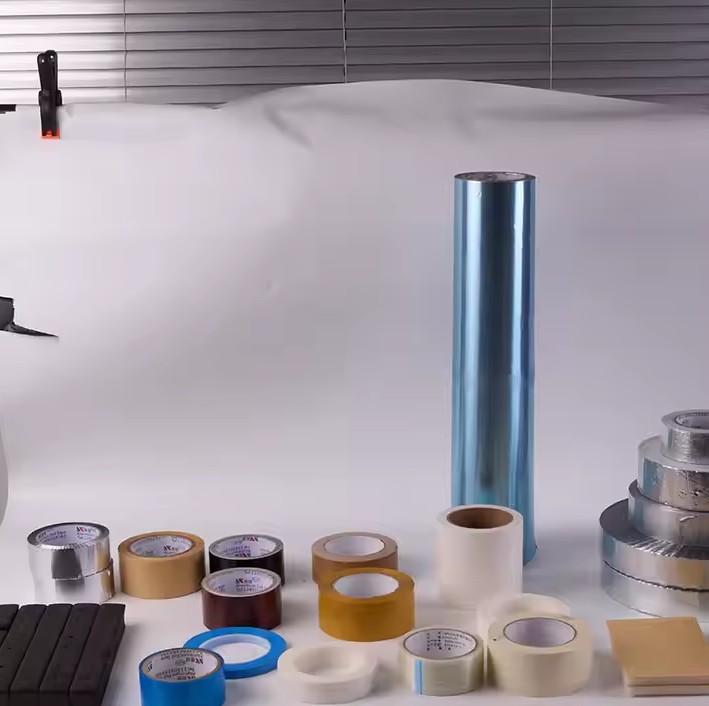Introduction
In today's manufacturing environment, which places strong emphasis on environmental protection and product reliability, choosing the right functional materials has become critical. RoHS certified aluminum heat seal foil tape is a high-performance composite material that, thanks to its excellent sealing, conductivity and temperature resistance, is widely used in heating systems and packaging. It is more than a simple adhesive — it is a solution that integrates sealing, shielding and protection, especially suitable for household appliances, pet care products and emerging consumer electronics that must meet strict environmental regulations and high quality standards.
Versatile Application Scenarios: From Home Appliances to Emerging Consumer Devices
RoHS compliant aluminum foil tape offers broader application than often imagined, and it shows unique value particularly in heating-element systems.
Heating wires in refrigerators, freezers, and heated toilet seats
In refrigeration defrost heaters and heated toilet seat systems, aluminum heat-seal foil tape can securely fix heating wires while providing moisture resistance, temperature tolerance and electromagnetic shielding—ensuring long-term stable operation of the system.
Heated pet beds
In pet heated beds, this tape not only encapsulates and secures heating elements, but also offers moisture protection and resistance to damage from chewing, extending product life while ensuring even and safe heat delivery.
E-cigarette heaters
In the heating elements of modern e-cigarettes, RoHS-certified aluminum heat-seal foil tape helps achieve good thermal conduction and EMI shielding, stabilizing heater performance and ensuring consistency while meeting international environmental standards.
Core Advantages of Heat Seal Foil Tape
In these heating-related application scenarios, heat seal foil tape delivers several key benefits:
- Excellent electromagnetic interference (EMI) shielding — effectively prevents electromagnetic leakage during heating element operation and protects system stability.
- Good temperature and moisture resistance — maintains reliable adhesion and protection even under long-term humid or high-temperature conditions.
- High-strength sealing and mechanical protection — securely fixes heating wires, blocks air and moisture, and resists chemical corrosion, improving safety and product lifespan.
- Environmental compliance — RoHS certification ensures final products can enter global markets.
Correct Application Steps: Ensuring Safety for Heating Wires and Sensitive Components
Proper application is essential for achieving effective sealing and protection:
- Surface preparation: Clean the surface to be bonded, ensuring it is free of oil and contaminants.
- Precise cutting: Cut the tape to the required size based on the heating wire layout or structural shape.
- Even heat activation: Use a heat gun or heating equipment to evenly heat the adhesive side and activate the heat-sensitive adhesive.
- Quick application and pressure: Immediately apply the tape to the heating element or component and use a roller to press it down, removing air bubbles and ensuring full contact.
- Natural cooling and curing: Let the bonded area cool to room temperature to reach final strength, forming a durable shielding and protective layer.
Technical Parameters Explained: Key Selection References
Choosing the right RoHS certified aluminum heat seal foil tape requires focus on these technical indicators:
- Substrate thickness and purity: Determines mechanical strength and shielding effectiveness.
- Heat-activated adhesive properties: Activation temperature, flow (melt) viscosity and final bond strength should match the application process.
- Temperature resistance range: High-quality tapes typically withstand continuous operation above 120°C and short-term peak soldering temperatures.
- Surface resistivity: Measures conductivity and EMI shielding effectiveness — lower values indicate better conductivity.
- Moisture and chemical resistance: Ensures long-term reliability in refrigeration, bathroom (toilet seat), and e-cigarette environments.
How to Choose the Right Heat Activated Sealing Tape
When selecting the best tape for different heating and sealing applications, consider the following comprehensive factors:
- Type of substrate to be bonded: Different heating-element materials and substrates require adhesive systems with different formulations and activation temperatures.
- Required seal strength: Determine whether the application needs temporary holding for lightweight packaging or permanent structural bonding for heavy-duty use.
- Environmental conditions: Consider whether the product will be exposed to extreme temperatures, humidity, UV, or chemicals, which determine required durability and weather resistance.
- Compatibility with existing production equipment: The tape's activation temperature and activation time must match the heating capacity of the production line to ensure feasibility and efficiency.
By weighing these factors, manufacturers can select a product that meets technical specifications while optimizing production cost and reliability.
Conclusion
Choosing RoHS certified aluminum heat seal foil tape for heating-element applications — such as heating wires in refrigerators/freezers and heated toilet seats, heated pet beds, and e-cigarette heaters — improves product safety, longevity and regulatory compliance. Proper selection and correct application help manufacturers meet environmental standards, reduce maintenance costs, and strengthen global competitiveness.
Optional
If you would like, I can compress this article into a concise marketing version suitable for product brochures or a website product page.

